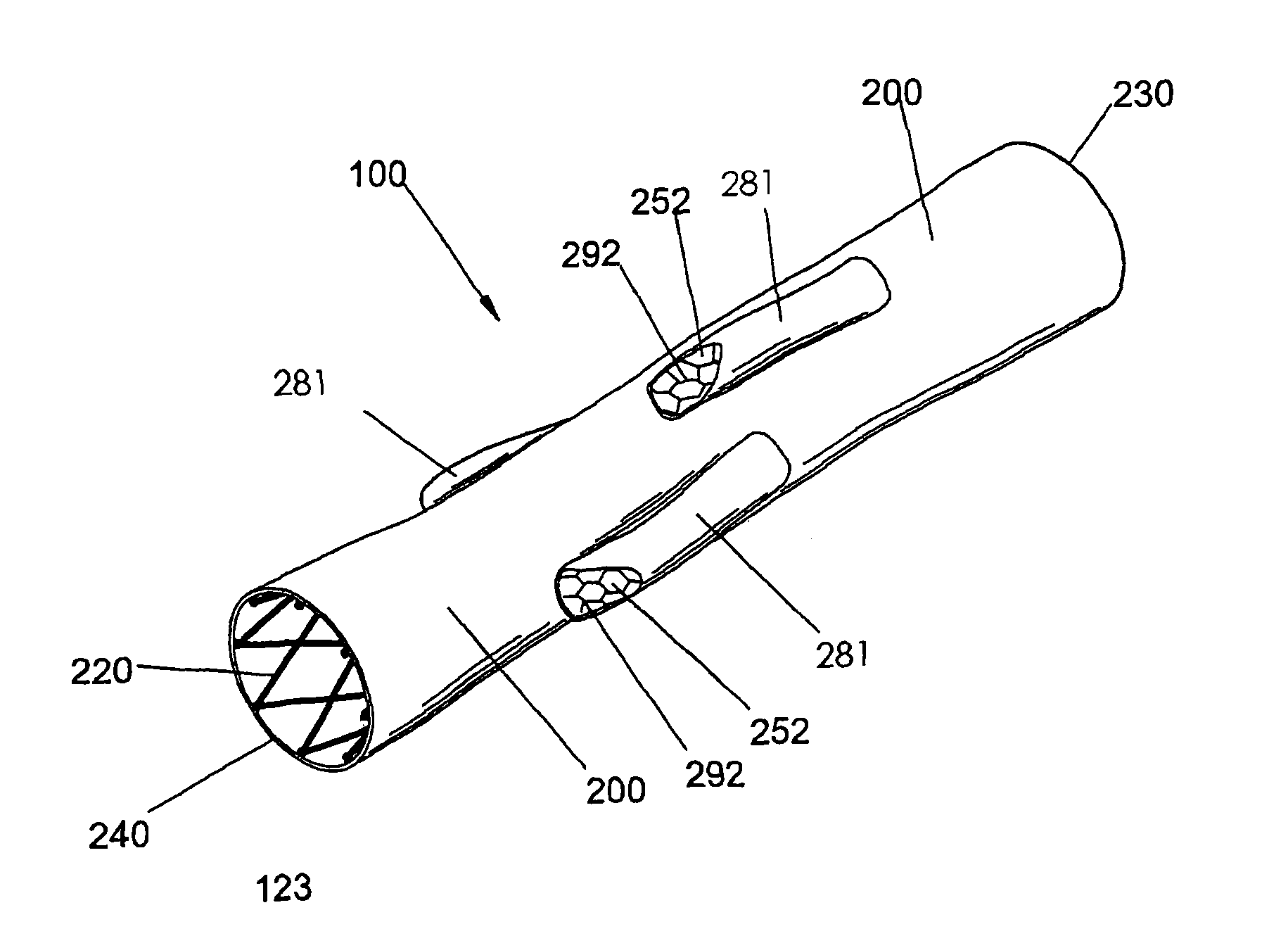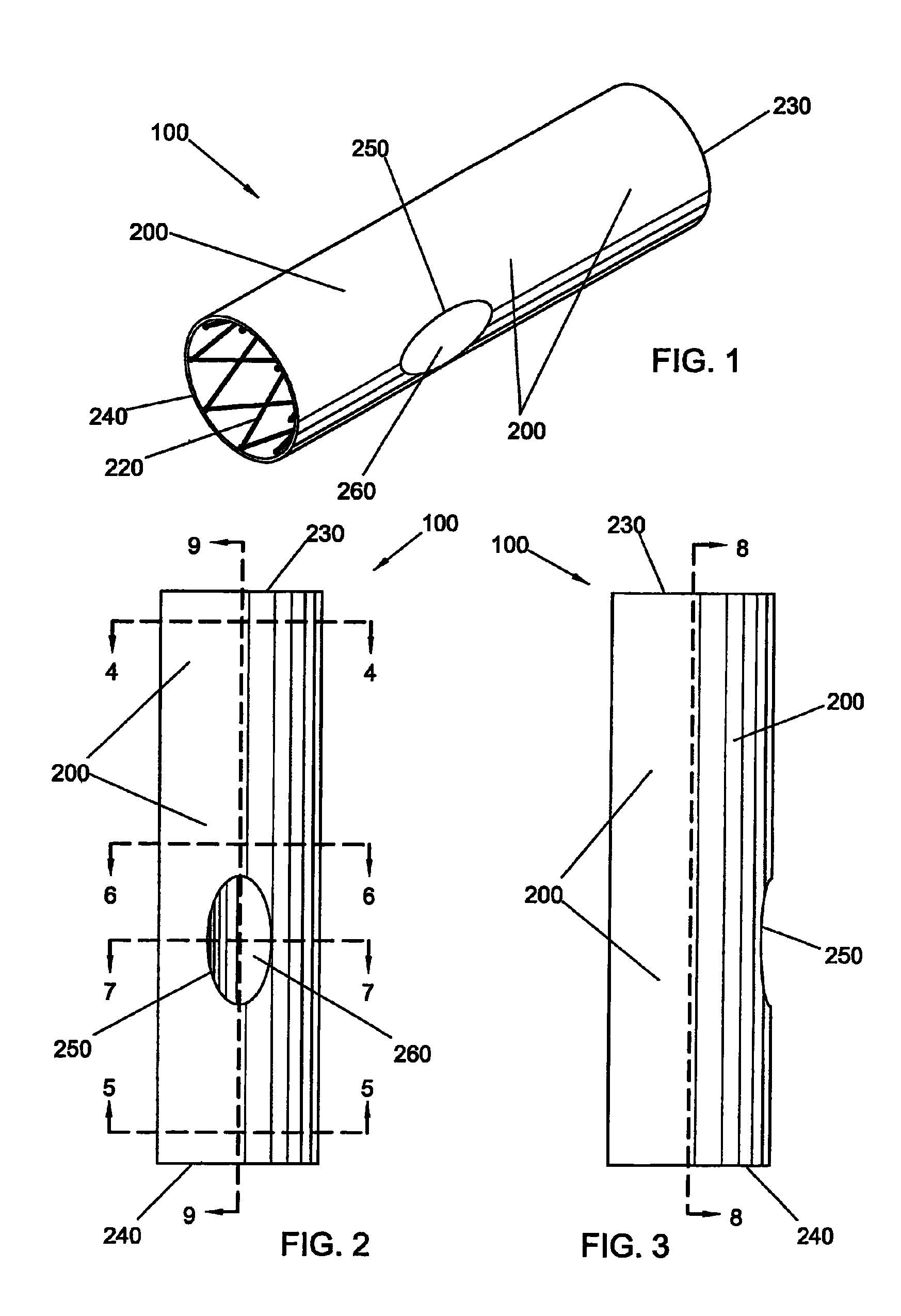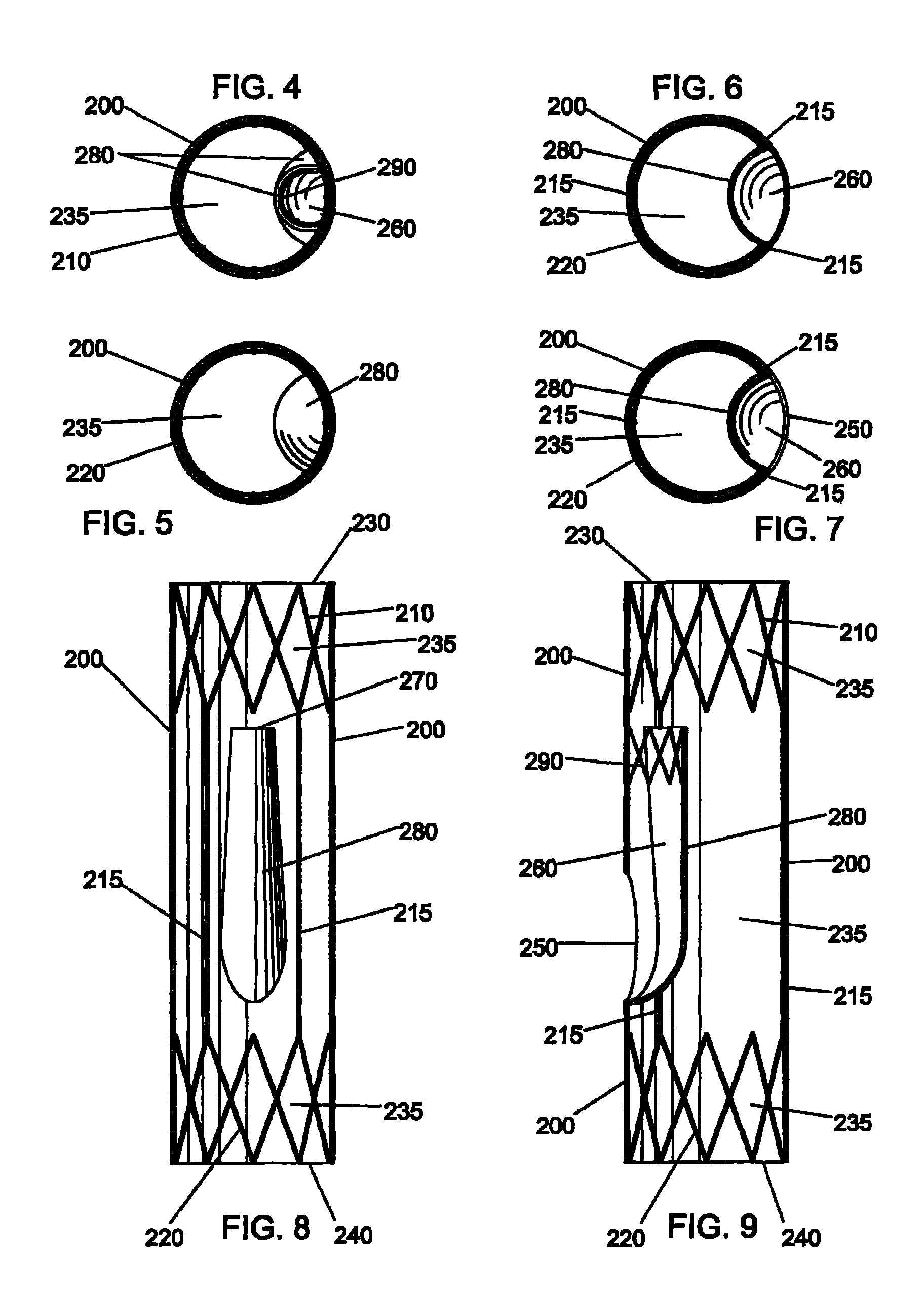Method of deploying a bifurcated side-access intravascular stent graft
a stent and side access technology, applied in the field of intravascular stent grafts, can solve the problems of inadequacies of prior art devices, significant morbidity or even sudden death, and progression of damage to the affected area
- Summary
- Abstract
- Description
- Claims
- Application Information
AI Technical Summary
Benefits of technology
Problems solved by technology
Method used
Image
Examples
Embodiment Construction
[0065]For purposes of the present written description and / or claims, “proximal” shall denote the direction along a vessel system in which multiple smaller vessels come together to form a larger vessel, and “distal” shall denote the opposite direction, i.e., the direction in which a larger vessel divides into multiple smaller vessels. For an arterial system proximal therefore corresponds to “upstream”, while distal corresponds to “downstream”. It should be noted that for a venous system or a lymphatic system, the correspondence would be reversed. The correspondence may vary for other vascular or duct systems.
[0066]A bifurcated intravascular primary stent graft 100 according to the present invention is illustrated in FIGS. 1-9 and comprises: a first primary stent segment 210; a second primary stent segment 220; a primary graft sleeve 200 having first open end 230, having a second open end 240, forming a main fluid flow channel 235 therebetween, and having a side opening 250 therethrou...
PUM
 Login to View More
Login to View More Abstract
Description
Claims
Application Information
 Login to View More
Login to View More - R&D
- Intellectual Property
- Life Sciences
- Materials
- Tech Scout
- Unparalleled Data Quality
- Higher Quality Content
- 60% Fewer Hallucinations
Browse by: Latest US Patents, China's latest patents, Technical Efficacy Thesaurus, Application Domain, Technology Topic, Popular Technical Reports.
© 2025 PatSnap. All rights reserved.Legal|Privacy policy|Modern Slavery Act Transparency Statement|Sitemap|About US| Contact US: help@patsnap.com



